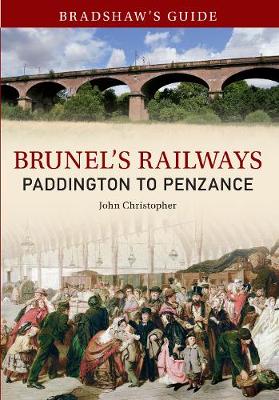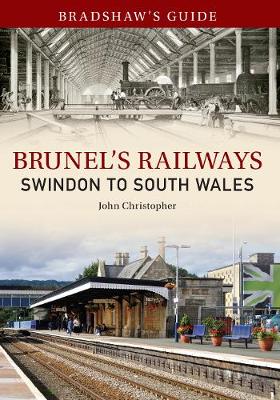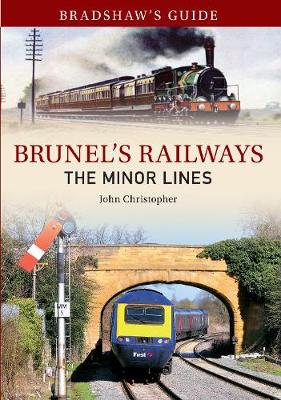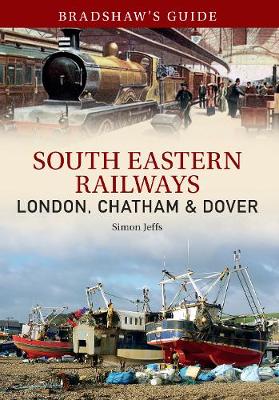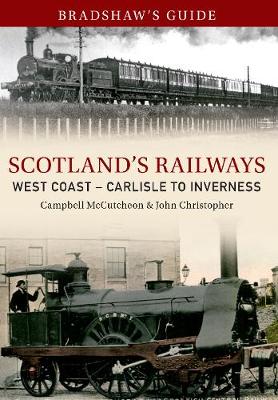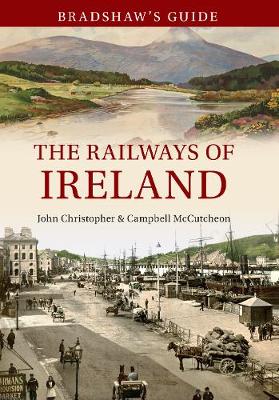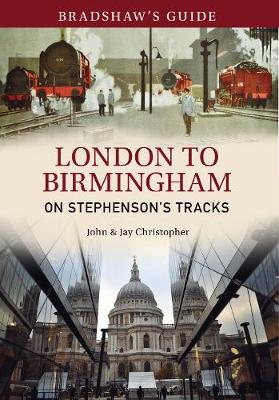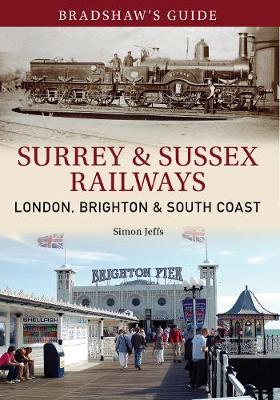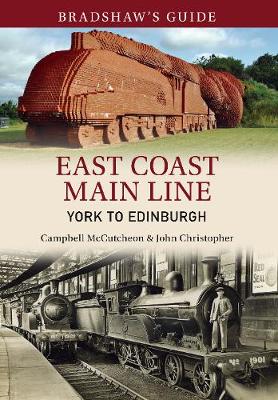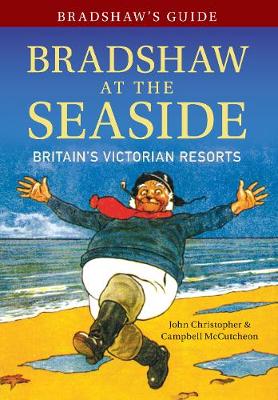Bradshaw's Guide
12 primary works • 13 total works
Book 1
Bradshaw's Guide Brunel's Railways Paddington to Penzance
by John Christopher
Book 2
Bradshaw's Guide Brunel's Railways Swindon to South Wales
by John Christopher
Book 3
Book 4
South Eastern Railways: London, Chatham & Dover
by Simon Jeffs and John Christopher
Book 5
Bradshaw's Guide Scotlands Railways West Coast - Carlisle to Inverness
by John Christopher and Campbell McCutcheon
'Bradshaw's Guides were invaluable in their time and they provide the modern-day reader with a fascinating insight into the nineteenth century rail traveller's experience.'
Campbell McCutcheon takes us through the west coast and Highlands of Bradshaw's Scotland, using contemporary Victorian and Edwardian photographs and postcards to illustrate the scenes that the users of Bradshaw's Guide to Scotland's Railways would have experienced. This volume covers primarily the lines of the Caledonian, Glasgow & South Western, Scottish Central and Highland Railways and the geographical area of the west coast and highlands.
Book 6
Bradshaw's Guide Scotland's Railways East Coast Berwick to Aberdeen & Beyond
by John Christopher and Campbell McCutcheon
'Bradshaw's Guides were invaluable in their time and they provide the modern-day reader with a fascinating insight into the nineteenth century rail traveller's experience.'
Campbell McCutcheon takes us up the eastern side of Bradshaw's Scotland, using contemporary Victorian and Edwardian photographs and postcards to illustrate the scenes that the users of Bradshaw's Guide to Scotland's Railways would have experienced. This volume covers primarily the lines of the North British Railway and the Great North of Scotland Railway.
Book 7
Bradshaw's Guide The Railways of Wales
by John Christopher and Campbell McCutcheon
John Christopher and Campbell McCutcheon take us on Brunel's broad gauge lines in South Wales, before joining the central and northern railways, using contemporary Victorian and Edwardian photographs and postcards to illustrate the scenes that the readers of Bradshaw's Guide to the Railways would have experienced. This volume covers the South Wales Railway, the Great Western Railway, the Cambrian lines and the Chester & Holyhead Railway as well as the many branch lines.
Book 8
Bradshaw's Guide The Railways of Ireland
by John Christopher and Campbell McCutcheon
John Christopher and Campbell McCutcheon take us on the railways of Ireland, using contemporary Victorian and Edwardian photographs and postcards to illustrate the scenes that the readers of Bradshaw's Guide to the Railways would have experienced. This volume covers several of Ireland's railways at the time, including the Great Southern Railway, the Dublin & Kingstown Railway, the Great Southern & Western Railway, the Midland Great Western Railway, and including those of Northern Ireland.
Book 9
Bradshaw's Guide London to Birmingham
by John Christopher and Jay Christopher
'Seldom has the gigantic intellect of man been employed upon a work of greater utility.' Punch, in praise of Bradshaw's publications.
Bradshaw's guide was published in 1863, not that long after most of the railway network had been completed. It gives the reader a unique insight into the world of the Victorian railways and goes beyond the engineering aspects to record the sights to be seen in the towns and cities encountered along the way. John and Jay Christopher present Bradshaw's original text accompanied by contemporary images and many new colour photographs of the same journey today.
Book 10
Bradshaw's Guide West Coast Main Line Manchester to Glasgow
by Campbell McCutcheon and John Christopher
'Seldom has the gigantic intellect of man been employed upon a work of greater utility.' Punch, in praise of Bradshaw's publications
Bradshaw's guide was published in 1863, not that long after most of the railway network had been completed. It gives the reader a unique insight into the world of the Victorian railways and goes beyond the engineering aspects to record the sights to be seen in the towns and cities encountered along the way. Campbell McCutcheon and John Christopher present Bradshaw's original text accompanied by contemporary images to bring the journey to life for the modern reader.
Book 11
Bradshaw's Guide Surrey & Sussex Railways
by Simon Jeffs and John Christopher
'Seldom has the gigantic intellect of man been employed upon a work of greater utility.' Punch, in praise of Bradshaw's publications.
Bradshaw's guide was published in 1863, not that long after most of the railway network had been completed. It gives the reader a unique insight into the world of the Victorian railways and goes beyond the engineering aspects to record the sights to be seen in the towns and cities encountered along the way. Local author and railway expert Simon Jeffs accompanies Bradshaw's original text with contemporary images and many new colour photographs of the same journeys today.
Book 13
Bradshaw's Guide East Coast Main Line York to Edinburgh
by John Christopher and Campbell McCutcheon
'Seldom has the gigantic intellect of man been employed upon a work of greater utility.' Punch, in praise of Bradshaw's publications.
Bradshaw's guide was published in 1863, not that long after most of Britain's railway network had been completed. It gives the reader a unique insight into the world of the Victorian railways and goes beyond the engineering aspects to record the sights to be seen in the towns and cities encountered along the way. Campbell McCutcheon and John Christopher present Bradshaw's original text accompanied by contemporary images to bring the ECML journey to life for the modern reader.
Bradshaw's Guide Bradshaw at the Seaside
by John Christopher and Campbell McCutcheon
'Oh! I do like to be beside the seaside,
I do like to be beside the sea!
I do like to stroll upon the Prom, Prom, Prom!
Where the brass bands play:
Tiddely-om-pom-pom!'
Using Bradshaw's Guide illustrated with contemporary images and seaside postcards, John Christopher and Campbell McCutcheon take us on a tour of Britain's Victorian resorts.
